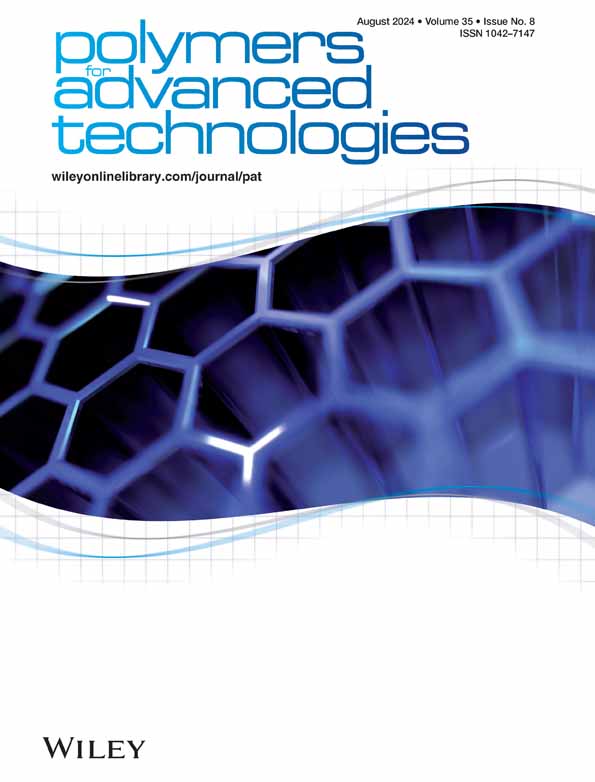增强聚合物的导电性:金属离子在导电聚合物体系中的作用
IF 3.4
4区 工程技术
Q2 POLYMER SCIENCE
引用次数: 0
摘要
由于金属离子的加入对导电聚合物的机械、光学和电学特性具有重大影响,因此引起了广泛关注。本文深入探讨了金属离子在导电聚合物中的复杂作用,解释了它们如何影响功能性、结构稳定性和导电性增强。文章首先简要介绍了导电聚合物和掺杂工艺,然后深入探讨了金属离子与聚合物基质相互作用以改变其电子结构和电荷传输特性的特殊方式。在讨论掺杂金属离子的导电聚合物研究时,着重强调了表征技术在理解结构-性能相关性方面的重要性。此外,论文还探讨了掺杂金属离子的导电聚合物在能源存储、电子和传感器等众多领域的应用。文中讨论了在精确控制掺杂浓度和保证长期稳定性方面存在的困难,以及该领域未来发展的潜在途径。本综述通过深入研究金属离子在导电聚合物中的功能,为开发和优化各种应用的功能材料提供了重要见解。本文章由计算机程序翻译,如有差异,请以英文原文为准。
Enhancing conductivity in polymers: The role of metal ions in conducting polymer systems
As metal ion inclusion has a substantial effect on conducting polymer's mechanical, optical, and electrical properties, it has attracted a lot of attention. This article delves into the complex role of metal ions in conducting polymers, explaining how they affect functionality, structural stability, and conductivity enhancement. The review starts with a synopsis of conducting polymers and doping processes before diving into the particular ways that metal ions interact with polymer matrices to alter their electronic structure and charge transport characteristics. The importance of characterization techniques in comprehending the structure–property correlations is highlighted in the discussion of metal‐ion doped conducting polymer studies. In addition, the paper looks at the uses of conducting polymers doped with metal ions in numerous sectors, including energy storage, electronics, and sensors. The difficulties in attaining accurate control over doping concentrations and guaranteeing stability over an extended period are discussed, as well as potential avenues for future development in this area. This review offers important insights into the development and optimization of functional materials for a variety of applications by thoroughly investigating the function of metal ions in conducting polymers.
求助全文
通过发布文献求助,成功后即可免费获取论文全文。
去求助
来源期刊

Polymers for Advanced Technologies
工程技术-高分子科学
CiteScore
6.20
自引率
5.90%
发文量
337
审稿时长
2.1 months
期刊介绍:
Polymers for Advanced Technologies is published in response to recent significant changes in the patterns of materials research and development. Worldwide attention has been focused on the critical importance of materials in the creation of new devices and systems. It is now recognized that materials are often the limiting factor in bringing a new technical concept to fruition and that polymers are often the materials of choice in these demanding applications. A significant portion of the polymer research ongoing in the world is directly or indirectly related to the solution of complex, interdisciplinary problems whose successful resolution is necessary for achievement of broad system objectives.
Polymers for Advanced Technologies is focused to the interest of scientists and engineers from academia and industry who are participating in these new areas of polymer research and development. It is the intent of this journal to impact the polymer related advanced technologies to meet the challenge of the twenty-first century.
Polymers for Advanced Technologies aims at encouraging innovation, invention, imagination and creativity by providing a broad interdisciplinary platform for the presentation of new research and development concepts, theories and results which reflect the changing image and pace of modern polymer science and technology.
Polymers for Advanced Technologies aims at becoming the central organ of the new multi-disciplinary polymer oriented materials science of the highest scientific standards. It will publish original research papers on finished studies; communications limited to five typewritten pages plus three illustrations, containing experimental details; review articles of up to 40 pages; letters to the editor and book reviews. Review articles will normally be published by invitation. The Editor-in-Chief welcomes suggestions for reviews.
 求助内容:
求助内容: 应助结果提醒方式:
应助结果提醒方式:


